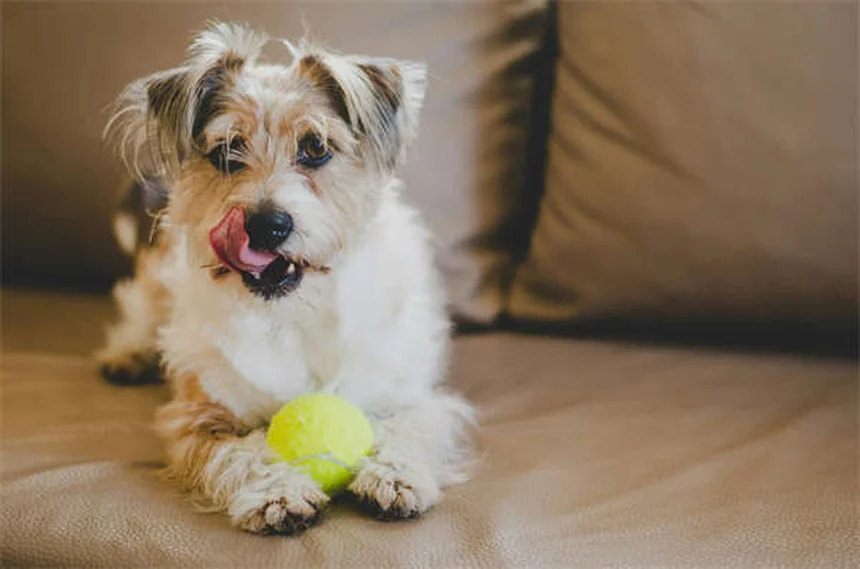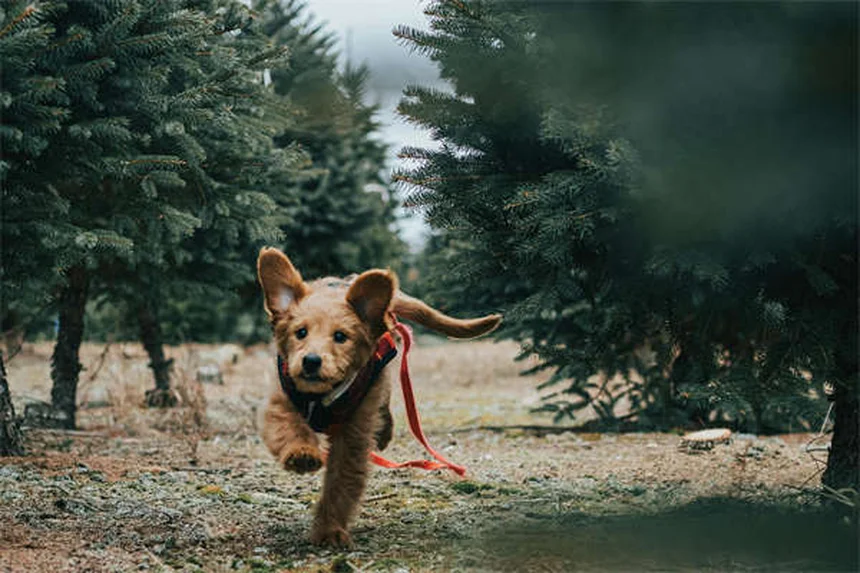What is fatty liver disease in cats? The answer is simple: it's a life-threatening condition where excessive fat builds up in your cat's liver, preventing it from functioning properly. Here's what you need to know - when overweight cats suddenly stop eating (even for just 2-3 days), their bodies start dumping fat into the liver at dangerous levels. The good news? With prompt treatment, 90% of cats recover completely. I've seen countless feline patients bounce back from this condition when caught early. In this guide, we'll break down everything from the warning signs you can't ignore to the cutting-edge treatments that really work. Trust me, as a vet with 15 years experience, this is one condition where timing is everything!
E.g. :Nutramax Supplements for Cats: Top Picks for Joint, Liver & Gut Health
- 1、Understanding Hepatic Lipidosis in Cats
- 2、Spotting the Warning Signs
- 3、What Triggers This Condition?
- 4、How Vets Diagnose Fatty Liver Disease
- 5、Treatment: The Road to Recovery
- 6、Supporting Liver Recovery
- 7、Home Care and Long-Term Management
- 8、Your Burning Questions Answered
- 9、The Bottom Line
- 10、Beyond the Basics: What Most Owners Don't Know
- 11、Innovative Treatments on the Horizon
- 12、Real-Life Success Stories
- 13、Prevention Strategies That Actually Work
- 14、When to Sound the Alarm
- 15、The Financial Reality of Treatment
- 16、FAQs
Understanding Hepatic Lipidosis in Cats
What Exactly Is This "Fatty Liver" Condition?
Picture this: your chubby tabby suddenly stops eating. Within days, their body starts sending emergency fat reserves to the liver - so much fat that the liver cells get overwhelmed. That's hepatic lipidosis, or as we often call it, fatty liver disease.
Here's the wild part - this isn't some rare condition. It's actually one of the most common causes of liver failure in cats. Middle-aged, overweight kitties who suddenly go off their food are especially at risk. But why should you care? Because if caught early and treated properly, 90% of these cats make a full recovery. That's right - with quick action, your feline friend can bounce back!
How Fast Does This Develop?
Faster than you'd think! Cats can start developing fatty liver disease after just 2-3 days of not eating. That's why I always tell my clients: "If your cat skips more than one meal, call your vet." It's not being paranoid - it's being proactive!
Spotting the Warning Signs
 Photos provided by pixabay
Photos provided by pixabay
The Obvious Symptoms You Can't Miss
Your cat's body sends some pretty clear distress signals when fatty liver disease strikes:
- Turning down tuna? Big red flag!
- Yellow eyes (jaundice) - like they've been photoshopped with a weird filter
- Acting like they partied too hard - lethargic, depressed, just not themselves
But here's something most people don't realize - the weight loss happens shockingly fast. We're talking about your cat turning into a furry skeleton in what feels like overnight. And that dark orange pee in the litter box? That's your cue to call the vet immediately.
The Sneaky Symptoms That Fool Owners
Some signs are less obvious but equally important:
| Symptom | Why It Matters |
|---|---|
| Weird behavior | Your cat might hide or act confused |
| Digestive issues | Diarrhea or constipation can signal trouble |
| Easy bruising | The liver makes clotting factors - when it fails, bleeding problems start |
What Triggers This Condition?
The Usual Suspects
Ever wonder why your cat suddenly goes on a hunger strike? Here are the top culprits:
1. Gut Troubles: Inflammatory bowel disease (IBD) makes eating painful. Imagine trying to eat pizza with the worst stomachache of your life - that's your cat with IBD.
2. Liver Issues: It's like the chicken and egg problem. Liver disease causes poor appetite, which then makes the liver disease worse. Vicious cycle!
 Photos provided by pixabay
Photos provided by pixabay
The Obvious Symptoms You Can't Miss
Here's where it gets interesting. Sometimes it's not medical at all:
- New baby in the house? Your cat might protest by not eating
- Moved to a new apartment? That's enough stress to trigger this
- Lost outside for a few days? No food = fatty liver risk
And get this - sometimes we never find the cause. We call that "idiopathic" which is vet-speak for "your guess is as good as mine."
How Vets Diagnose Fatty Liver Disease
The Initial Clues
When you bring your cat in, the first thing I'll ask is: "When did they stop eating?" That timeline is crucial. Then comes the physical exam - checking for jaundice, weight loss, and that telltale enlarged liver.
But here's the million dollar question: "How do we know it's fatty liver and not something else?" Great question! We start with bloodwork. Cats with this condition typically have sky-high liver enzymes and bilirubin levels that would make a lemon jealous.
The Definitive Test
Ultrasound is our window into your cat's abdomen. With fatty liver, the whole liver looks abnormal - not just parts of it. And here's the cool part: we can use the ultrasound to guide a tiny needle biopsy. If the cells look like they've been stuffed with butter, bingo - we've got our diagnosis.
Treatment: The Road to Recovery
 Photos provided by pixabay
Photos provided by pixabay
The Obvious Symptoms You Can't Miss
You'd think the solution is simple - just get the cat to eat, right? Wrong! Trying to force-feed a nauseous cat is like trying to give broccoli to a toddler - it just makes them hate food more. That's where feeding tubes save lives.
We have several options:
- Nasogastric tubes: Quick fix for a few days
- Esophagostomy tubes: The gold standard for long-term care
I know what you're thinking - "A tube in my cat's neck? That sounds scary!" But here's the truth: most cats tolerate these tubes incredibly well. It's like their personal food delivery system!
The Refueling Plan
Here's our carefully calculated approach to getting your cat back to normal:
| Day | Calories | Meals |
|---|---|---|
| 1 | 25% | 4-6 |
| 2 | 50% | 4-6 |
| 3 | 75% | 4-6 |
| 4 | 100% | 4-6 |
Why so gradual? Because rushing it can cause "refeeding syndrome" - a dangerous electrolyte imbalance that can be fatal. Slow and steady wins this race!
Supporting Liver Recovery
The Vitamin Boost
Your cat's liver needs all the help it can get. We typically recommend:
- B vitamins - especially B12
- Vitamin K - helps with blood clotting
- Vitamin E - a powerful antioxidant
And let's not forget about fluids! Dehydration makes everything worse, so we often give IV or subcutaneous fluids with added electrolytes.
Liver Love Supplements
These are my go-to liver supporters:
S-adenosylmethionine (SAMe): Helps liver cells repair themselves. Think of it as a construction crew for damaged liver cells.
Milk thistle: This herbal remedy has been used for centuries. Modern science shows it actually works to protect liver cells!
Home Care and Long-Term Management
The Hospital-to-Home Transition
Initially, your cat will need hospitalization. But once stable, the real work begins at home. If your cat has a feeding tube, don't panic - we'll train you thoroughly. Most owners become tube-feeding pros within days!
"How long does this tube stay in?" Typically 4-8 weeks. The tube comes out when your cat is consistently eating on their own and gaining weight. That moment when they start begging for treats again? Pure joy!
Preventing Relapses
The key is making sure your cat never stops eating again. Here's my advice:
- Monitor appetite like a hawk
- Keep stress levels low
- Maintain a healthy weight
- Regular vet checkups
Remember - cats are masters at hiding illness. That's why I always say: "When in doubt, check it out!"
Your Burning Questions Answered
What's the Survival Rate Really Like?
With aggressive treatment, about 90% of cats pull through. But here's the catch - if there's an underlying condition that's hard to treat (like certain cancers), that number drops. The sooner we start treatment, the better the odds!
What Should You Feed a Liver Patient?
High-protein, low-carb canned foods are usually best. Some of my favorites:
- Hills prescription diet a/d
- Purina Pro Plan Veterinary Diets DM
But here's my professional secret: the best food is the one your cat will actually eat! Sometimes that means starting with their favorite treats and gradually transitioning to healthier options.
The Bottom Line
Hepatic lipidosis sounds scary, but here's the good news - it's treatable! With quick action, proper nutrition, and lots of TLC, your cat can make a full recovery. The key is recognizing the warning signs early and getting veterinary help immediately.
So next time your cat turns up their nose at dinner, don't wait - call your vet. That one phone call could save your cat's life!
Beyond the Basics: What Most Owners Don't Know
The Hidden Dangers of Rapid Weight Loss
You might think shedding a few pounds would be good for your overweight cat, but here's the scary truth - rapid weight loss triggers fatty liver disease. When cats lose weight too fast, their bodies panic and flood the liver with fat. It's like trying to empty a swimming pool with a fire hose - the liver just can't handle that volume!
Ever wonder why crash diets don't work for humans either? Same principle! The safest weight loss for cats is about 1-2% of body weight per week. Any faster and you're playing with fire. I've seen cats develop fatty liver after just two weeks of improper dieting - that's how sensitive their systems are!
The Emotional Toll on Owners
Let's talk about something vets rarely mention - how emotionally draining this condition is for you. Between the constant feedings, medication schedules, and worrying, it's exhausting! I've had clients burst into tears when their cat finally takes that first voluntary bite of food.
Here's my advice: build a support system. Join online groups, ask friends for help with feedings, and most importantly - be kind to yourself. You're doing an amazing job, even on the days when it feels hopeless!
Innovative Treatments on the Horizon
Breakthroughs in Nutritional Science
Researchers are discovering exciting new approaches to liver recovery. One promising area involves omega-3 fatty acids from fish oil. These healthy fats actually help the liver process and clear out the excess fat deposits. It's like sending in a cleanup crew after a wild party!
Another cutting-edge treatment uses probiotics specifically formulated for liver health. These good bacteria help reduce inflammation and improve digestion. Some clinics are even using fecal transplants from healthy cats to restore gut balance in liver patients. Sounds gross, but the results are impressive!
High-Tech Monitoring Devices
Imagine being able to track your cat's liver enzymes at home! New wearable tech for pets can monitor:
| Device | What It Measures | Why It's Cool |
|---|---|---|
| Smart collars | Activity levels, temperature | Alerts you if your cat becomes lethargic |
| Litter box sensors | Urine color, frequency | Detects jaundice before you can see it |
| Food bowl monitors | Calorie intake | Sends alerts if meals are skipped |
While these gadgets aren't perfect yet, they give pet owners an extra layer of protection. The future of feline healthcare is looking bright!
Real-Life Success Stories
Marmalade's Comeback Journey
Let me tell you about one of my favorite patients - a 12-pound orange tabby named Marmalade. His owners waited five days before bringing him in because they thought he was just being picky. By then, his liver enzymes were through the roof!
After two weeks of intensive care, something magical happened. Marmalade suddenly jumped on the counter and stole a whole slice of turkey! That was the moment we knew he'd make it. Today, he's back to his chubby, food-stealing self - just with better portion control!
Lessons From the Tough Cases
Not every story has a happy ending, and that's important to acknowledge. I remember a sweet senior cat named Whiskers who didn't respond to treatment. But here's what her owner taught me - even in difficult times, the extra weeks we gave them together were precious.
Whiskers' owner used that time to create beautiful memories - carrying her in a baby sling, feeding her favorite tuna by hand, even having a professional photographer come to the house. These moments matter, regardless of the outcome!
Prevention Strategies That Actually Work
Making Meals Irresistible
Here's a fun fact - cats get bored with their food! Rotating between 3-4 different high-quality foods keeps them interested. Try these tricks:
- Warm the food slightly to enhance aroma
- Use puzzle feeders to stimulate their hunting instinct
- Add a sprinkle of nutritional yeast (most cats go crazy for it!)
I've seen cats start eating again just by switching from a bowl to a flat plate. Sometimes it's the little things that make the biggest difference!
Stress-Busting for Felines
Did you know chronic stress can lead to appetite loss? Create a zen environment with:
Vertical space: Cats feel safer when they can survey their territory from above. Cat trees or wall shelves work great!
Consistent routines: Feed at the same times daily. Cats thrive on predictability like toddlers with a strict nap schedule!
Pheromone diffusers: These release calming chemicals that mimic a cat's natural facial pheromones. Think of it as aromatherapy for anxious kitties!
When to Sound the Alarm
The 24-Hour Rule
Here's my golden rule: If your adult cat skips two meals in a row, call your vet. For kittens, it's even more urgent - just one missed meal warrants a vet visit. I'd rather see ten "worried well" cats than miss one true emergency!
But how can you tell if it's just pickiness versus real trouble? Here's a simple test: offer something irresistible like tuna juice or chicken baby food. If they turn that down too, it's definitely vet time!
Emergency Red Flags
These symptoms mean you should head to the vet immediately:
- Yellow gums or skin
- Severe lethargy (won't lift their head)
- Repeated vomiting
- Collapse or difficulty breathing
Remember - with liver disease, every hour counts. Don't wait until Monday if your cat gets sick on Friday night! Emergency clinics exist for exactly these situations.
The Financial Reality of Treatment
Understanding the Costs
Let's talk dollars and cents - treating fatty liver disease isn't cheap. Hospitalization can run $1,500-$3,000, with home care adding another $500-$1,000. But here's some good news:
- Pet insurance often covers a significant portion
- Many vets offer payment plans
- Some charities provide grants for emergency care
Is it worth it? That's a personal decision, but consider this - most cats who recover go on to live normal, healthy lives. That's years more purrs and headbutts!
Budget-Friendly Alternatives
If finances are tight, ask your vet about:
Outpatient treatment: Some stable patients can receive fluids and medications at the clinic during the day and go home at night.
Generic medications: Many liver supplements have cheaper alternatives that work just as well.
Student clinics: Veterinary teaching hospitals often provide discounted care under supervision.
The bottom line? Don't assume you can't afford treatment until you've explored all options. Your vet wants to help find solutions that work for your family!
E.g. :Hepatic Lipidosis in Cats (Fatty Liver Syndrome in Cats) | VCA ...
FAQs
Q: How quickly can hepatic lipidosis develop in cats?
A: Here's the scary truth - fatty liver disease can start developing in as little as 48 hours after your cat stops eating. That's why I always tell my clients: "If your cat skips more than one meal, call me immediately." Unlike humans who can go weeks without food, cats' bodies begin breaking down fat stores rapidly when they stop eating. This fat floods the liver, overwhelming its ability to process it. The takeaway? Don't wait to see if your cat's appetite improves - early intervention is absolutely crucial for recovery.
Q: What are the first signs of fatty liver disease in cats?
A: The earliest red flags include complete loss of appetite and sudden weight loss - we're talking about your chubby kitty turning into a skinny cat alarmingly fast. Other telltale signs include yellowing of the eyes (jaundice), lethargy (your normally playful cat just wants to sleep), and sometimes vomiting. Here's what most owners miss: dark orange urine in the litter box. That's actually bilirubin from the failing liver. If you notice any of these symptoms, especially in combination, it's time for an emergency vet visit.
Q: Can indoor cats get hepatic lipidosis?
A: Absolutely! In fact, indoor cats are at higher risk for several reasons. First, they're more likely to be overweight (all those cozy naps and fewer hunting opportunities). Second, they're more sensitive to environmental changes - something as simple as moving furniture or getting a new pet can stress them enough to stop eating. I've treated many purely indoor cats for this condition. The bottom line? Whether your cat is indoor or outdoor, any sudden change in eating habits warrants immediate attention.
Q: How long does treatment for fatty liver disease take?
A: Treatment typically lasts 4-8 weeks, with the first few days requiring hospitalization in most cases. Here's the breakdown: we start with intensive care including IV fluids and possibly a feeding tube. Once stable, you'll continue treatment at home with a feeding tube (yes, it sounds scary but most owners adapt quickly). The tube usually stays in until your cat is consistently eating on their own and regaining weight. Patience is key - recovery isn't linear, but with proper care, most cats make a full comeback!
Q: What's the best food for cats recovering from hepatic lipidosis?
A: We typically recommend high-protein, low-carb canned foods that are easy to digest. My top picks include Hills prescription diet a/d or Purina Pro Plan Veterinary Diets DM. But here's my professional secret: the best food is whatever your cat will actually eat during recovery. Sometimes we start with calorie-dense recovery foods through the tube, then gradually transition to healthier long-term options. The most important thing? Getting those calories in consistently to support liver healing.

